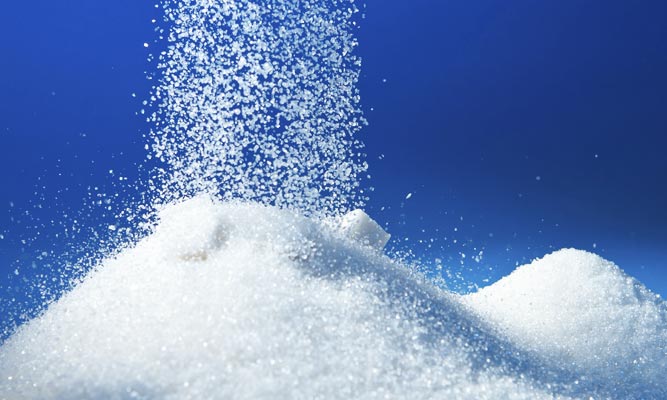America’s Number One Addiction Might Shock You
She spoke in hushed tones about a second and then third eclair she devoured alone, hiding all evidence from her husband.

“You’re addicted,” I said matter-of-factly. Sugar had become my friend’s drug of choice, and constantly grazing on even so-called healthy hidden-sugar foods had trained her body to demand it constantly.
If you can relate to my friend’s predicament, I’ve got hopeful news: sugar addiction is not your fault.
“Being addicted to sugar and flour is not an emotional eating disorder,” says Dr. Mark Hyman, author of The Blood Sugar Solution 10-Day Detox Diet. “It’s a biological disorder, driven by hormones and neurotransmitters that fuel sugar and carb cravings — leading to uncontrolled overeating. It’s the reason nearly 70 percent of Americans and 40 percent of kids are overweight.”
Studies confirm a food addict’s brain operates similarly to a drug addict when they think about eating sugary, fatty foods. As these and other studies emerge and prominent experts speak out, sugar addiction has become a legitimate, concerning focus as sugar consumption, particularly as high-fructose corn syrup (HFCS), escalates.
“Animal studies have shown that refined sugar is more addictive than cocaine, heroin or morphine,” says Dr. Pamela Peeke, author of The Hunger Fix. “An animal will choose an Oreo over morphine. Why? This cookie has the perfect combination of sugar and fat to hijack the brain's reward center.” According to a new study published in PLoS One, sugar can be eight times more addictive than cocaine.
It’s not just the immediate gratification that creates damage. Sugar addiction also sets the stage for future hunger, cravings, and food intolerances.
One study published in The American Journal of Clinical Nutrition found high-sugar impact foods trigger the nucleus accumbens, your brain region that controls reward and craving. Researchers noted this domino addictive pattern plays a “special significance to eating behavior at the next meal.”
Experts like Dr. Robert Lustig argue hormonal havoc ensues. High blood sugar elevates insulin, which blocks your satiety hormone leptin. High levels of cortisol, your stress hormone, increase your urge for comfort foods. High cortisol during sleep increases ghrelin, your hunger hormone, so you’re more likely to ask for a stale donut the next morning with your caffeine fix.
You get the domino-effect point. From that hormonal havoc, you can begin to understand how sugar addiction occurs.
The good news is with the right strategies, you can crush your sugar addiction in just weeks. You know the usual suspects (hello, walnut brownie a la mode), yet so-called healthy foods could also feed that addiction. Bottled drinks, vinaigrette dressings, and glazed meats are among the many “sneaky sugars” that add up around your waistline.
Cold turkey isn’t the answer. Instead, I want you to gradually taper off sugar so you never feel deprived or struggle with withdrawal.
I designed my The Sugar Impact Diet to help you gradually transition off sugar to avoid withdrawal and cravings that can set you back, which is why I’ve created three cycles in the program.
Cycle 1 will help you step away from them slowly, easing you from high-sugar impact foods to medium-sugar impact foods. You’re not going cold turkey here. You’re going to trade and taper with swaps. Nothing is cut from your diet without being replaced.
You’ll really shift from sugar burner to fat burner in Cycle 2, when the weight falls off and you reset your body and taste buds. During Cycle 2 you’ll swap medium-sugar impact foods for low-sugar impact foods.
The average person loses 10 pounds during these two weeks! As the weight melts off, you’re letting your taste buds come back to life and you’re retraining them to appreciate what natural sweetness really means.
By the time you get to Cycle 3, you’ll feel like a new person: lighter, more energetic, and more in tune with how your body is designed to eat. Many clients feel so great by the time they get to Cycle 3 that they don’t want to reintroduce any high-sugar impact foods.
Cycle 3 is all about customizing the program to your body and your long-term goals. You’ll determine whether you can occasionally handle a high-sugar impact food or if you need to keep your sugar intake consistently low.
You can break permanently your sugar addiction in just weeks, without feeling deprived, hungry, or struggling with miserable withdrawal. Simply transition to low-sugar impact foods and before you know it, you’ll be a 24/7 fat-burning machine.
With my plan, you won’t be famished every two or three hours, and you might even occasionally forget to eat. (Though skipping meals is a no-no!)
Best of all, as your taste buds come alive again, you’ll learn to appreciate spicy and savory foods like Cajun spices, salsas, garlic, and onions. You’ll ratchet up the flavor in your foods until you can appreciate the way they burst!
As a sugar addict, you may not even realize that your diet is bland. Not only because you’re eating one-dimensional high-sugar impact foods, but because you’ve also lost your ability to truly taste.
Once people become sugar detectives, they become amazed at how sneaky added sugars can become. What’s one food you once thought healthy that you actually learned was a high-sugar impact disaster? Share your thoughts below or on my Facebook fan page.
© 2015 JJ Virgin & Associates, Inc.

Related Keywords










